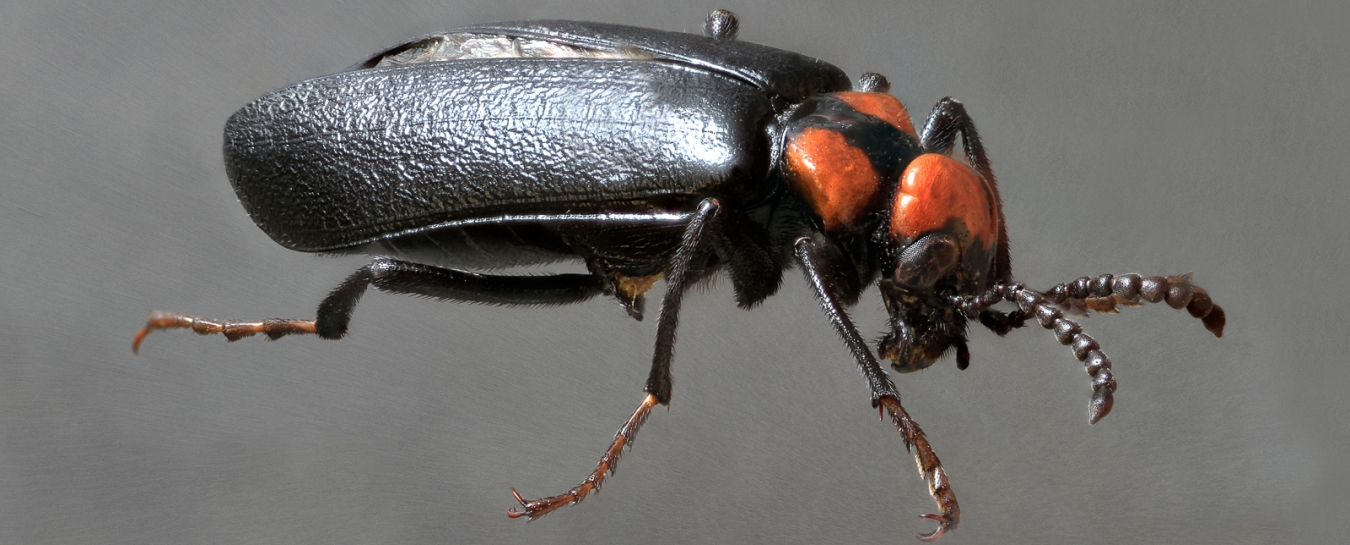
Entomology
Entomology, the study of insects, is an important focus of the Museum's collections and research program. Our entomology program is largely focused on regional biodiversity. The Entomology Collection contains over 350,000 prepared specimens (including both insects and arachnids) and is constantly growing to improve regional representation. Many elements of the collection are databased to permit local citizens and biologists to browse the data online. Discover over 137,000 of our collection objects through the ecdysis portal, which aggregates collection data from a large number of entomology collections, with an emphasis on North America.
Geographic and Taxonomic Highlights
The collection focuses primarily on the Santa Barbara region, including important holdings from the California Channel Islands. Representation is very strong from the Transverse Ranges, including the mountains of Santa Barbara, Ventura, Kern, Los Angeles, San Bernardino, and Riverside Counties. Desert areas to the east are also well represented, as is the southern Sierra Nevada. The collection is very strong in California beetles (Coleoptera), moths and butterflies (Lepidoptera), and parasitic wasps (Hymenoptera).
Facilities and Loans
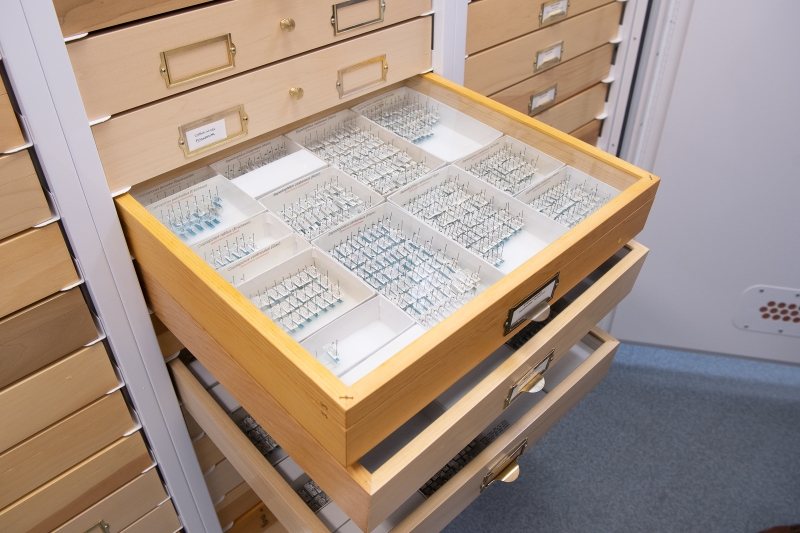
The dry collection is housed in modern metal cabinets, in Cornell-style drawers, and is mostly sorted to the family level. The collection holds over 20 primary types, described as a result of California beetle surveys, housed separately from the remainder of the collection. The collection includes a sizeable wet component, including bulk trapping residues from which beetles have been extracted. There is very good representation of regional spiders and other arachnids, and substantial collections of aquatic insects and beetle larvae. The frozen specimen collection contains specimens available for molecular systematic studies. For the most part this collection is focused on beetles peculiar to California, but donations of other material will be considered.
Specimen loans are available under standard conditions. To arrange a specimen loan or research visit, please contact Schlinger Chair and Curator of Entomology Alex Harman, Ph.D., for more information.
Staff and Specialties
Schlinger Chair and Curator of Entomology Alex Harman, Ph.D.
Research Associate Katja Seltmann, Ph.D. (Hemiptera; Hymenoptera)
Research Associate M. Andrew Johnston, Ph.D. (Coleoptera)
Research Associate Elaine Tan (Hymenoptera)
Research Associate Zach Brown (Hymenoptera)
Collection Associate Jennifer Maupin, Ph.D. (Arachnida)
Collection Associate Sandy Russell (Lepidoptera)
Beetles
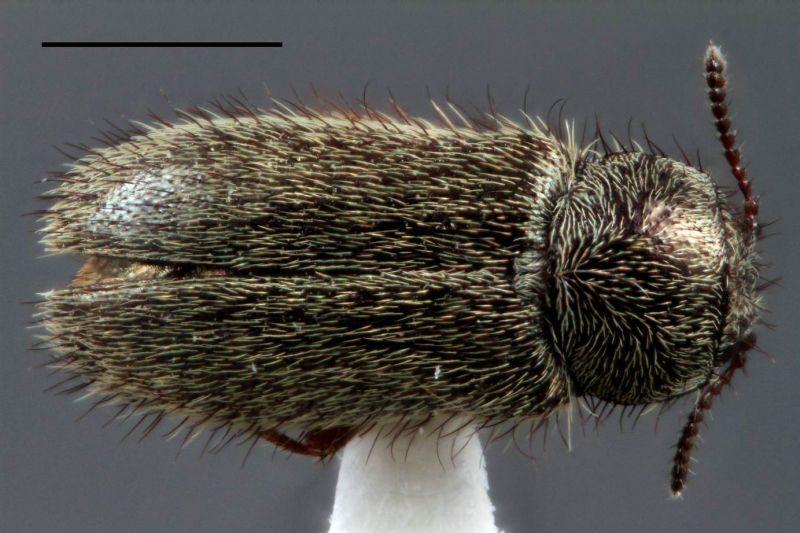
Trichochrous sordidus (LeConte) (Melyridae: Dasytinae). Scale bar = 1 mm. Photo by Lucie Gimmel
Beetles (Coleoptera) have received special attention from our staff. Based on the research efforts of former Schlinger Chair and Curator of Entomology Michael Caterino, Ph.D., and his successor Dr. Gimmel, the state’s beetle fauna is recorded to comprise 7,962 described species (as of January 2024). Not only are previously unrecorded species being regularly added to this list, but new species are being discovered and described regularly. An online database of SBMNH beetle specimen records is now available through the ecdysis portal, allowing mapping of distributions alongside collection data from other museums. Over 1,000 species have now been photographed and may be viewed online through this portal.
Recent collection growth has resulted primarily from regional surveys conducted through the California Beetle Project, developed and led by Dr. Caterino and continued at a reduced but sustained level by Dr. Gimmel. The California Beetle Project page is no longer updated: specimen data have been migrated to ecdysis and an updated resource based on the project’s literature component is forthcoming.
Major Collection Donations
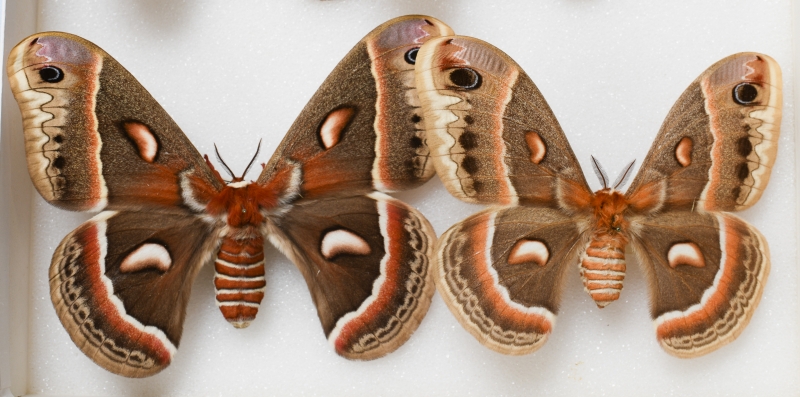
Hyalophora cecropia (Linnaeus) (Saturniidae).
The collection has been the beneficiary of several important donations, especially of local moths and butterflies. Three important donations made this decade include:
- Kenneth G. Denton, Jr. collection of California butterflies (c. 2,500 specimens)
- Thomas E. Dimock collection of Lepidoptera (17,136 specimens)
- Paul & Sandra Russell collection of western North American Lepidoptera (>50,000 specimens)
These collections are currently being incorporated into our main collection of Lepidoptera.
As for the general collection, it has grown significantly through the incorporation of bulk trapping residues from which beetles have been extracted. This includes samples from Malaise, Lindgren, pitfall, and flight interception trapping, as well as extensive litter sifting, and they are full of other interesting arthropods awaiting further study.
Primary types in the SBMNH Entomology Collection
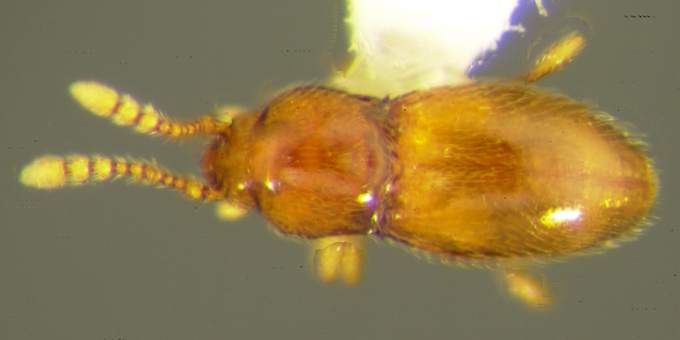
Cephennium aridum Hopp & Caterino (Staphylinidae: Scydmaeninae), holotype
The insect fauna of the Santa Barbara region, as true for California in general, is rich and surprisingly poorly known. Collecting by Museum staff over the years has already turned up numerous species of insects not previously known from our area, including several species new to science.
- Coleoptera: Anthicidae: Rastrogenius ambrosiaphilus Gimmel & Johnston, 2023
- Coleoptera: Cleridae: Cymatodera caterinoi Rifkind, 2019
- Coleoptera: Cryptophagidae: Renodesta stephani Caterino, Leschen & Johnson, 2008
- Coleoptera: Cryptophagidae: Renodesta ramsdalei Caterino, Leschen & Johnson, 2008
- Coleoptera: Histeridae: Hippeutister californicus Caterino & Tishechkin, 2008
- Coleoptera: Histeridae: Renclasea falli Tishechkin & Caterino, 2009
- Coleoptera: Histeridae: Margarinotus ephemeralis Caterino, 2010
- Coleoptera: Melyridae: Microasydates sanclemente Gimmel & Mayor, 2022
- Coleoptera: Melyridae: Microasydates santabarbara Gimmel & Mayor, 2022
- Coleoptera: Staphylinidae: Cephennium grandarboreum Hopp & Caterino, 2009
- Coleoptera: Staphylinidae: Cephennium canestroi Hopp & Caterino, 2009
- Coleoptera: Staphylinidae: Cephennium urbanum Hopp & Caterino, 2009
- Coleoptera: Staphylinidae: Cephennium aridum Hopp & Caterino, 2009
- Coleoptera: Staphylinidae: Actium vestigialis Caterino & Chandler, 2010
- Coleoptera: Staphylinidae: Oropodes serrano Chandler & Caterino, 2011
- Coleoptera: Staphylinidae: Oropodes tatavium Chandler & Caterino, 2011
- Coleoptera: Staphylinidae: Oropodes chumash Chandler & Caterino, 2011
- Coleoptera: Staphylinidae: Oropodes esselen Chandler & Caterino, 2011
- Coleoptera: Staphylinidae: Oropodes tongva Chandler & Caterino, 2011
- Coleoptera: Staphylinidae: Dacnochilus nigrapicalis Jiménez & Galián, 2013
- Coleoptera: Staphylinidae: Sonoma agitator Ferro, 2016
- Coleoptera: Staphylinidae: Sonoma caterinoi Ferro, 2016
- Coleoptera: Staphylinidae: Sonoma rossellinae Ferro, 2016
- Hymenoptera: Braconidae: Masona wow Dal Pos & Martens, 2024
The above species were described in the following papers:
Caterino, M.S., R.A.B. Leschen and C. Johnson. 2008. A new genus of Caenoscelini (Cryptophagidae: Cryptophaginae) from California, with two new species. The Coleopterists Bulletin, 62(4): 509-523.
Caterino, M.S. and A.K. Tishechkin. 2008. A review of Hippeutister Reichensperger (Histeridae: Hetaeriinae), with new species from California and Costa Rica. Zootaxa, 1895: 39-52.
Caterino, M.S. and D.S. Chandler. 2010. A new species of Actium Casey (Staphylinidae: Pselaphinae) endemic to Santa Catalina Island, California. The Coleopterists Bulletin, 64(3): 187-191.
Caterino, M.S. 2010. A review of California Margarinotus Marseul (Coleoptera: Histeridae: Histerinae: Histerini), with descriptions of two new species. The Coleopterists Bulletin, 64: 1-12.
Chandler, D.S. and M.S. Caterino. 2011. A taxonomic revision of the New World genus Oropodes Casey (Staphylinidae: Pselaphinae). A Festschrift in honor of Dr. Ross Bell. ZooKeys, 147: 425-477. (doi: 10.3897/zookeys.147.2072)
Dal Pos, D., G.R. Broad and A.P. Martins. 2024. Small jewels: two new species of the rare genus Masona van Achterberg (Hymenoptera, Ichneumonoidea, Braconidae), with a catalogue of world species and comments on the peculiar morphology of the genus. European Journal of Taxonomy, 925: 135–160.
Ferro, M.L. 2016. Fourteen new species of Sonoma Casey (Coleoptera: Staphylinidae: Pselaphinae) with a key to species from western North America. Insecta Mundi, 0472: 1-57.
Gimmel, M.L. and M.A. Johnston. 2023. A morphologically divergent new genus and species of Eurygeniinae from California, USA (Coleoptera: Anthicidae). The Coleopterists Bulletin, 77(3): 387-396.
Gimmel, M.L. and A.J. Mayor. 2022. Revision of Microasydates, new Nearctic genus of soft-winged flower beetles (Coleoptera: Melyridae: Dasytinae: Listrini). The Coleopterists Bulletin, 76(4): 537-568.
Hopp, K.J. and M.S. Caterino. 2009. Seven new species of Cephennium Müller and Kunze (Coleoptera: Staphylinidae: Scydmaeninae: Cephenniini) from California with a key to native North American species. ZooKeys, 24: 31-54. (doi: 10.3897/zookeys.24.247)
Jiménez-Sanchez, E. and J. Galián. 2013. Revision of Dacnochilus LeConte (=Acalophaena Sharp) (Coleoptera: Staphylinidae: Paederinae). Annals of Carnegie Museum 81(2): 73-117.
Rifkind, J. 2019. New species of flightless Cymatodera Gray, 1832 (Coleoptera: Cleridae: Tillinae) from the California Channel Islands. The Coleopterists Bulletin, 73(3): 551-557.
Tishechkin, A.K. and M.S. Caterino. 2009. A new North American genus of the Hetaeriinae (Coleoptera: Histeridae), with descriptions of six new species from U.S.A. and Mexico. Zootaxa, 2311: 1-18.
Identification Help
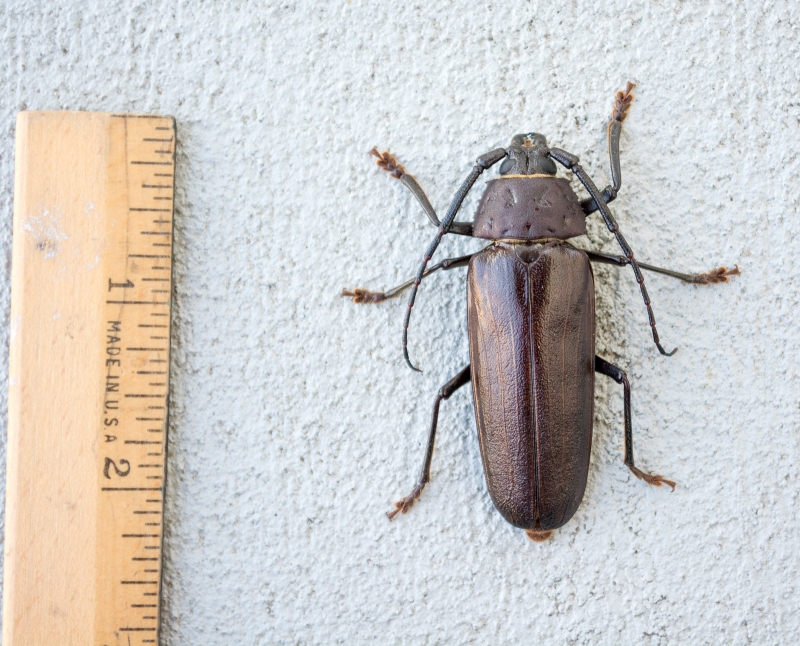
Trichocnemis spiculatus (LeConte) (Cerambycidae: Prioninae)
We are interested in promoting appreciation and understanding of local insects and are always available for public inquiries. It is our policy not to answer ID questions without any specimen or photo. We have thousands of species of insects in our area, and most are too small and anatomically complex for a layperson’s description to be meaningful. Identifications may take a few days, but if a good specimen or high quality photograph can be provided, we can usually offer some information.
For insect or arachnid identification requests, please submit your information to Ask a Curator or contact Dr. Gimmel at mgimmel@sbnature2.org. Be sure to include a photo, an indication of the animal’s size, and information about where and when it was observed.
Butterfly Inquiries
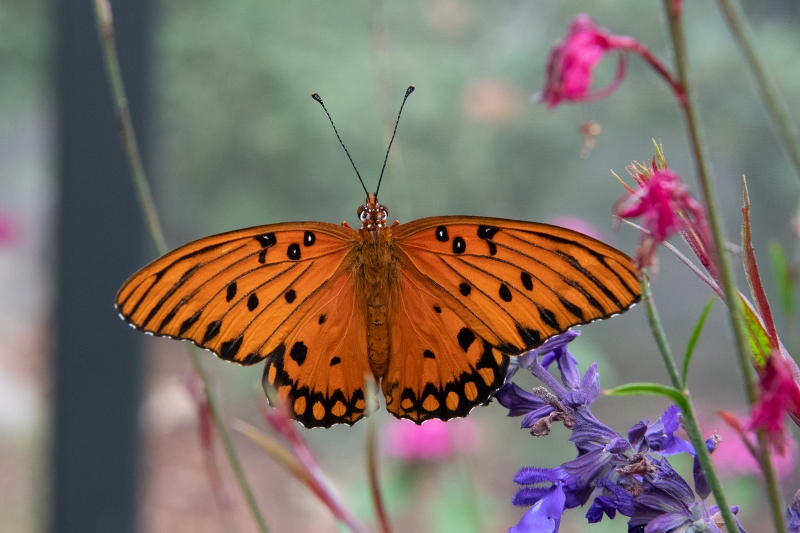
Gulf Fritillary (Agraulis vanillae) in the seasonally recurring exhibit Butterflies Alive!
For common questions about butterflies in the Santa Barbara area, see our Central Coast Butterfly FAQ.
Our Museum specializes in preservation of dead specimens and does not possess expertise in raising butterflies and other insects. For our magnificent Butterflies Alive! exhibit in the Sprague Butterfly Pavilion, all butterflies are sent to us from farms as pupae. To learn more about this exhibit, check out our video series Butterfly Magic Window. If you have questions about raising live butterflies or other insects, the Butterfly Fun Facts site is a good place to start.
Questions about the Museum’s recurring exhibit Butterflies Alive! should be directed to other departments. For general inquiries, contact info@sbnature2.org. For press information, contact Director of Marketing and Communications Briana Sapp Tivey at bsapptivey@sbnature2.org.
Top, Blister Beetle (Lytta vulnerata). Photo by Lucie Gimmel
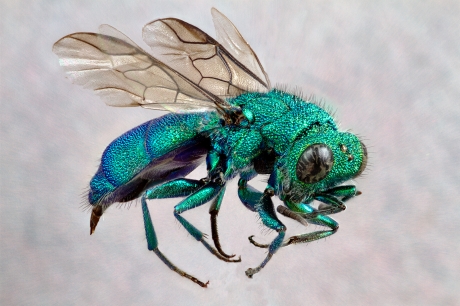 Scientific Imagery by Lucie Gimmel
Scientific Imagery by Lucie Gimmel 
